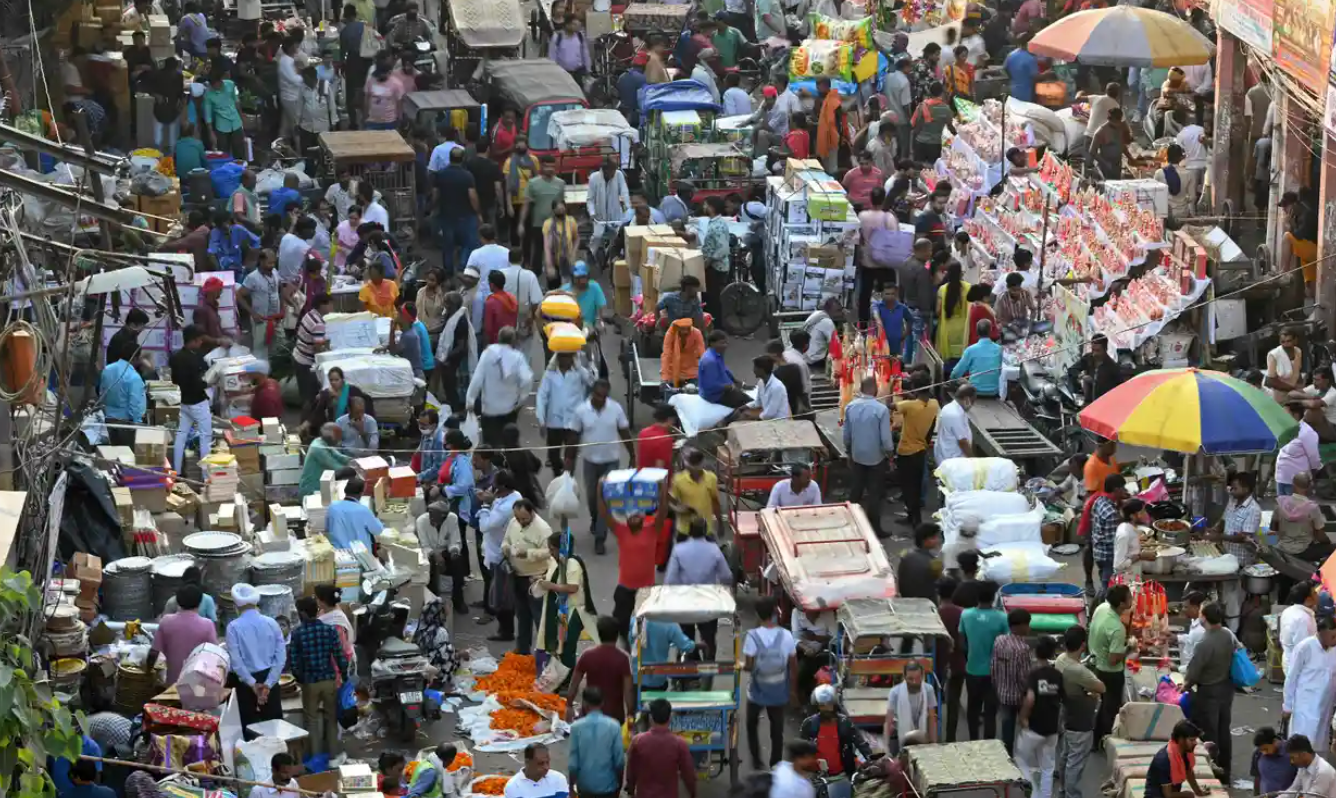India Surpassing China as the Most Populous Country in the World
India to become world’s most populous country. Source: AP Photo / Altaf Qadri.
Together, China and India’s collective populations are equal to about more than one third of the world’s eight billion citizens. The UN population data chief told reporters on Monday that India was about to surpass China’s population given the projections analyzed using fertility levels. By the end of April, India’s population is expected to reach 1,425,775,850 people, with projections highlighting the fact that the population will continue growing for several decades to come.
China’s population seemed to reach its peak size in 2022 and has now begun to decline. In 1971, the two nations possessed nearly identical fertility levels, just under six births per woman. However, during the second half of the century, both countries made a conscientious effort to try to curb their rapid population growth through policies that targeted fertility levels.
The addition of new policies, investments in human capital, and gender equity programs all contributed to China’s declining fertility rate in the 1980s. Especially given their “one child policy,” which was implemented in the 1980s and ended in 2016, which limited families to only have one child each. By 2022, China had one of the world’s lowest fertility rates which was around 1.2 births per woman.
Simultaneously, India’s current fertility rate has also declined to two births per woman, which is just below the replacement threshold of 2.1. Thus, UN reports indicate that India’s current birth rate may stabilize the Indian population in the long run in the absence of migration.
However, such rapid population growth will bring forth a myriad of issues that the nation will have to combat. Especially given the fact that persons aged 65 or over is expected to more than double in India which means that additional social support and protection must be developed to support older persons. Additionally, gender solidarity must be promoted in India to ensure that societies and generations can assist one another.
India has overtaken China as the world’s most populous country, according to UN estimates. Source: AP Photo / Altaf Qadri.
As society continues progressing through the 21st century, the United Nations also calls attention to efforts to combat climate change and move towards sustainable consumption and production. Especially in countries like India, it is essential that the increasing number of people and increasing incomes per capita do not undermine efforts to move towards a more sustainable future.
Poonam Muttreja, executive director of Population Foundation of India, stated that many were concerned about the implications that would follow being labeled the most populous country in the world. The Indian population was expected to overtake China in 2027, yet this overtake came sooner than expected because of India’s young population. However, India has also managed to stabilize their population faster than imaged and will possibly continue to slow down as long as the government continues implementing social policies to guide citizens down the right track.
India’s demography does not consist of a uniform distribution across the country. One third of the predicted population growth over the next decade will come from only two states, Bihar and Uttar Pradesh which are located in the north of the country. These two regions are some of India’s poorest and most agricultural states. Uttar Pradesh alone already has a population of about 235 million, bigger than Nigeria or Brazil.
On the other hand, India’s southern region is more prosperous which is demonstrated through their higher rates of literacy. Southern states have already stabilized their population rates and many have even begun to fall. However, southern states such as Kerala and Tamil Nadu are likely to face adversities in terms of their aging population. By 2025, one in five people living in Kerala will be over 60.
Perhaps the population divide between India’s north and south could be a result of political implications. After 2026, India’s electoral lines are going to be revised and redrawn based on census data. However, politicians of southern states fear that their success in bringing down population numbers through educational programmes and family planning could result in a reduction of their political representation in parliament and lead to further political domination of northern states that are facing large population booms.
Although India has one of the fastest-growing economies in the world, recently overtaking the United Kingdom as the fifth-largest, experts emphasize the importance of investing more in education so that the younger generation can seize improved employment opportunities over the next few decades.


